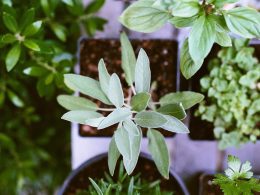Gardening can be a relaxing and rewarding hobby, but it can also be time-consuming and challenging, especially for those with busy schedules or limited experience. Fortunately, creating a low-maintenance garden that thrives without much work is possible with a few smart strategies and some careful planning. Whether you’re a novice gardener or an experienced one looking to simplify your routine, here are five tips to help you create a beautiful and hassle-free garden.
- Choose the Right Plants
The first step in creating a low-maintenance garden is selecting plants that are well-suited to your local climate, soil type, and sunlight conditions. Native plants and varieties that are adapted to your region will be more resilient and require less care than exotic or fussy plants. Look for perennials, shrubs, and trees that are disease-resistant, drought-tolerant, and low-maintenance, such as sedum, yarrow, coneflowers, and daylilies. Consider planting in groups rather than scattered around the garden to create a cohesive and low-maintenance look.
- Use Mulch and Groundcovers
One of the most effective ways to reduce the amount of time and effort you need to spend on your garden is by using mulch and groundcovers. Mulch helps retain moisture, suppress weeds, and regulate soil temperature, while groundcovers like creeping thyme, creeping Jenny, and vinca minor can fill in gaps between plants, prevent soil erosion, and add visual interest. Use a thick layer of mulch, such as shredded leaves or bark, to cover bare soil around plants and pathways. For a more natural look, consider using leaves, twigs, and other organic materials as mulch.
- Practice Smart Watering
Watering can be one of the most time-consuming and wasteful tasks in gardening, but it’s also essential for plant health and growth. To minimize the amount of water you need to use, consider installing a drip irrigation system or using a soaker hose. These methods deliver water directly to the roots of plants, reducing evaporation and runoff. Water your garden early in the morning or late in the evening to avoid losing water to evaporation, and use a rain gauge to measure how much water your garden receives naturally. Only water plants when they need it, and avoid overwatering, which can lead to root rot and other problems.
- Prune and Deadhead Regularly
Pruning and deadheading are essential tasks for maintaining the health and appearance of your garden, but they don’t have to be time-consuming or difficult. Regularly removing dead or damaged branches, stems, and flowers can help improve air circulation, prevent disease, and encourage new growth. Use sharp, clean tools and make clean cuts at a slight angle to avoid damaging the plant. Deadhead spent blooms on annuals and perennials to promote continuous flowering and prevent self-seeding. Regular pruning and deadheading can also help keep plants from becoming too large or unruly, reducing the need for more drastic pruning later on.
- Embrace Imperfection
Finally, remember that a low-maintenance garden doesn’t have to be perfect or pristine. A few weeds, some natural mulch, and a relaxed, informal style can actually enhance the beauty and charm of your garden. Rather than striving for a manicured, high-maintenance look, embrace the natural beauty of your plants and let them thrive in their own way. Focus on creating a garden that brings you joy and relaxation, rather than one that requires constant attention and perfection.
I hope this article is helpful for your needs! Let












